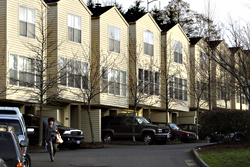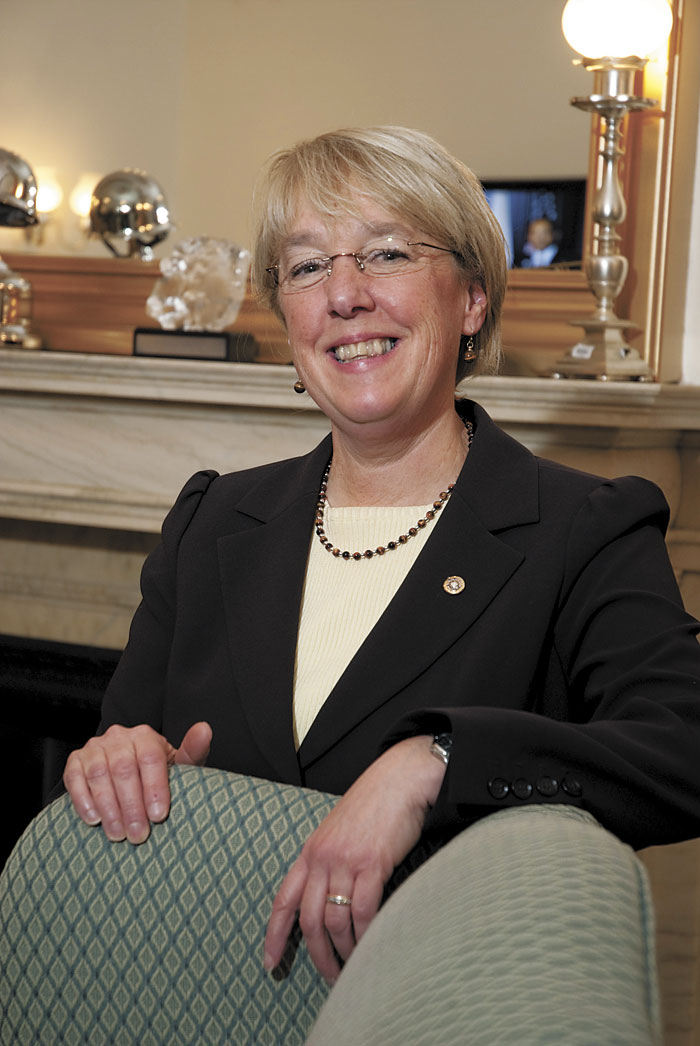You’ve heard this one before: Bill getsintroduced in the state Legislature. Bill would restrict development. Business types fight against it. Restriction gets removed. But this one has a twist: This time, the business types say they’re looking out for the little guy.
Fearing that renters are becoming an endangered species in neighborhoods increasingly prone to high-end makeovers, housing advocates and some lawmakers are pushing for legislation that would place a cap on the number of apartments that can be turned into condominiums. Seattle wouldn’t be the first city to have such a restriction: Since 1987, San Francisco has limited the number of condo conversions to 200 units per year, which are granted to a few lucky developers during an annual lottery.
But chances for that kind of restriction are dimming, thanks to the lobbying efforts of a handful of developers and real-estate agents who’ve taken their case to Olympia.
A bill making its way through theLegislature—which would require landlords to give tenants three months’ notice and up to three months’ rent before kicking them out—has been stripped of a provision that would give cities the authority to limit the number of apartments that can be turned into condos, à la San Francisco, or ban conversions altogether.
Developers say they’re fighting the ban in the name of affordable housing. “We’re trying to get policy makers to understand the middle-income housing crisis,” says Bob Mitchell, a lobbyist for the Washington Association of Realtors, who argues that condos provide a critical option for entry-level homeowners.
Seattle real-estate lawyer Joe McCarthy agrees. “If you take away the market’s ability to do conversion based on demand,” he says, “you will restrict supply. Prices will go up.”
Dave Kirzinger, managing partner of Mosaic Homes—which specializes in condo conversion and closed last week on the purchase of a 200-unit apartment building in West Seattle—says the city has had a healthy addition of rental stock over the past 10 to 20 years precisely because the market has been able to move freely. And Ezra Eickmeyer, who lobbies on behalf of Pioneer Property Group, noted that 80 percent of Pioneer’s conversion units sell for between $80,000 and $150,000. He says the state shouldn’t take away “some of the most affordable home-ownership opportunities.”
But Rep. Phyllis Kenney, D-Seattle, for one, isn’t buying it. She feels that simply stating the sticker price of a condo doesn’t take into account other costs like financing, insurance, and upkeep that accompany home ownership.
“They can’t tell me that they’re cheap,” she says. “Right now there’re a lot of unanswered questions. There’ve been so many conversions from apartments to condos. We really don’t know what price range they’re going in and who they are displacing. When they converted them into condos, they’re not something that’s as affordable as it was when it was a rental.”
Housing advocates point out that the conversion market has been brisk lately, something developers concede. According to the city Office of Housing, 3,775 apartment units were converted to condos in Seattle between January 2005 and December 2006. And 497 units have already been permitted for conversion during the first two months of 2007.
“That’s over 3 percent of the city’s affordable rental stock in a housing market that’s one of the most expensive in the country,” says John Fox of the Seattle Displacement Coalition.
Having a say in the conversion issue is a top priority in Olympia for the Seattle City Council. While the council hasn’t discussed what kind of cap it would consider if that provision survives the legislative guillotine, council member Tom Rasmussen says limits must be on the table.
“We’re facing a real crisis in the loss of affordable rentable apartments,” he says. “The rental vacancy rate is down to 3.1 percent. The rents are going up. It’s becoming harder and harder for low- to moderate-income people to find a place to rent.”
Both sides use San Francisco as an example to bolster their argument.
Those favoring a limit point to San Francisco’s vibrant neighborhoods and diverse housing options as proof that the cap is working. Those opposed cite San Francisco’s high rents and soaring condo prices as evidence that the limit has inflated the market.
And people in San Francisco don’t see eye to eye, either.
Janan New, executive director of the San Francisco Apartment Association, says the “severe” restrictions spawned a new, less-desirable type of housing class called “tenancy in common,” where buildings are owned jointly by tenants (similar to a co-op). She notes that these properties “aren’t as valuable” as condominiums because quarters and finances are split among multiple people.
Ted Gullickson, executive director of the San Francisco Tenants Union, said the law slowed what he called an “epidemic” of condo conversions in the early 1980s. Without it, he says San Francisco would look much different than it does today. “Had that not stopped,” he says, “developers would’ve flipped thousands of units.”
Kenney hopes it won’t come to that in Seattle. She’s busy in Olympia trying to get language to allow local control of caps back into the bill. The Seattle Displacement Coalition’s Fox says that if Kenney is successful, he and other advocates will lobby City Hall to freeze all conversions until the council has time to draw up a long-term game plan.
“Without this language, the bill is a tenant relocation assistance bill,” says Fox, “not a bill giving Seattle or any other city a tool to mitigate or control runaway market forces that are destroying rental housing, driving rents up, and causing the displacement of hundreds of low- and low-middle income tenants.”






